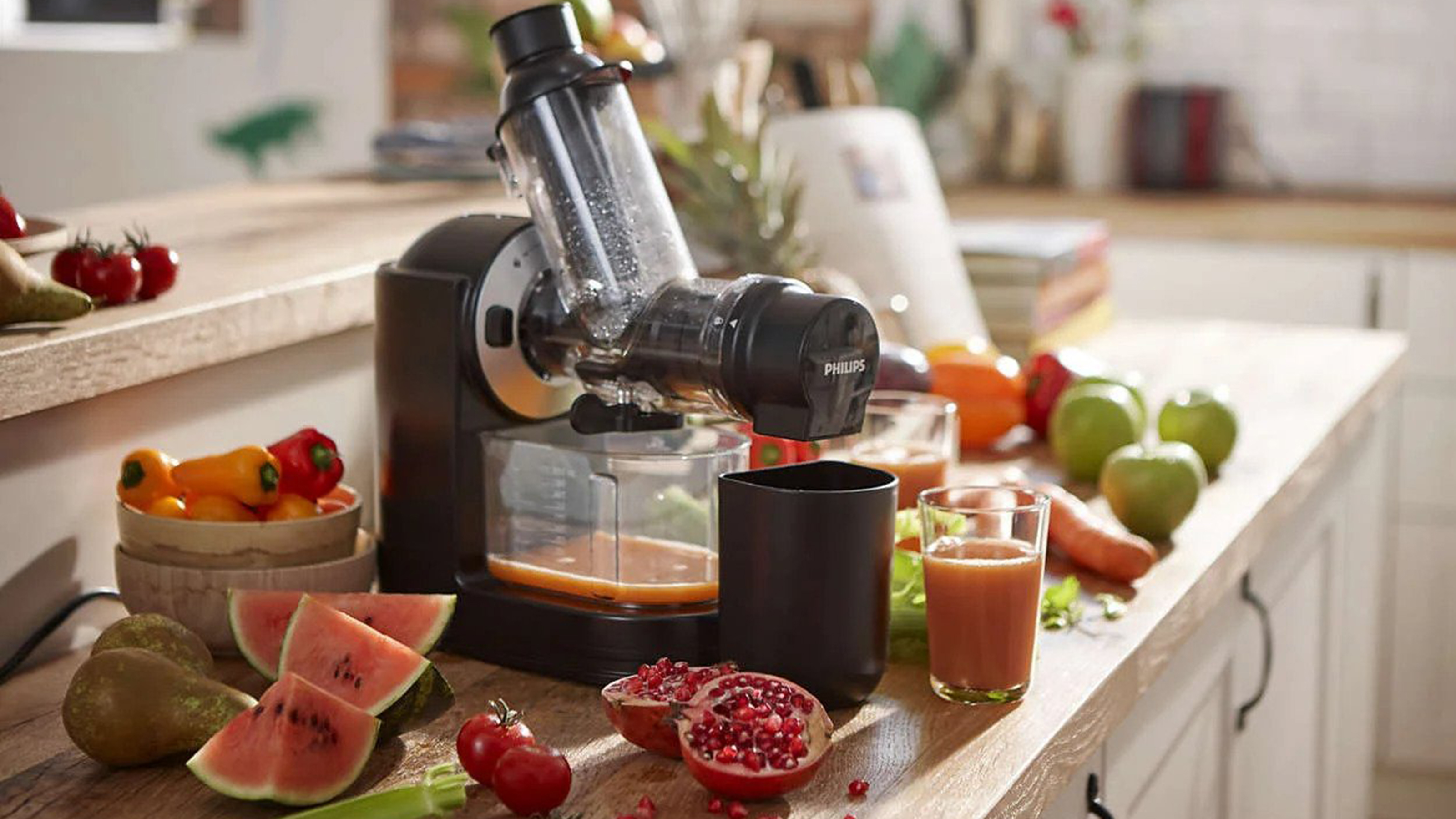
Often cited as one of the best juicers on the market, I’ve had the Philips Viva Masticating Slow Juicer on my kitchen worktop for a week and made several juices with it, so I’ve been able to get a good feel for what it’s like in comparison to more expensive masticating juicers as well as similarly-priced centrifugal juicers. Yes, I've reviewed five juicers in total, so I have been able to compare all of the models on my kitchen worktop to tell you which one is the best. The verdict on this one? I wouldn't recommend it as a juicer if you want something to use with a range of fruit and vegetables, but as an orange juicer it's pretty incredible. It can also juice raspberries, and if you want a compact juicer for a smaller kitchen, this is the one.
Keep reading for the full review and to see if it'll suit you. All in all, the results were very mixed, and while it excels in some areas, it’s a bit of a let-down in others.
TLDR: What I think of the Philips Viva Masticating Slow Juicer
There are two types of juicers you can buy: centrifugal juicers, which chop up and spin fruits and vegetables at high speed to extract the juice, and masticating juicers — also known as slow juicers or cold press juicers — which are slower and work by chewing up the foods before pressing out the juice. It’s said that masticating juicers are the better choice because they don’t get hot, so the nutrients are well preserved. But they’re often pricey in comparison to their centrifugal cousins.
The Philips Viva Masticating Slow Juicer is a reasonably priced choice, although the RRP is around £200, I’ve seen it for as little as £107, so it’s tempting if you’re looking to bag a slow juicer but don’t have a big budget. The question is whether it’s up to the job.
A word of warning: Turn up the "beet" of your favorite tunes in the kitchen, and avoid using it in the early hours of the morning, because it's quite a noisy machine. This might mean no Sunshine juice for you! *sad emoji*
Testing the Philips Viva Masticating Slow Juicer
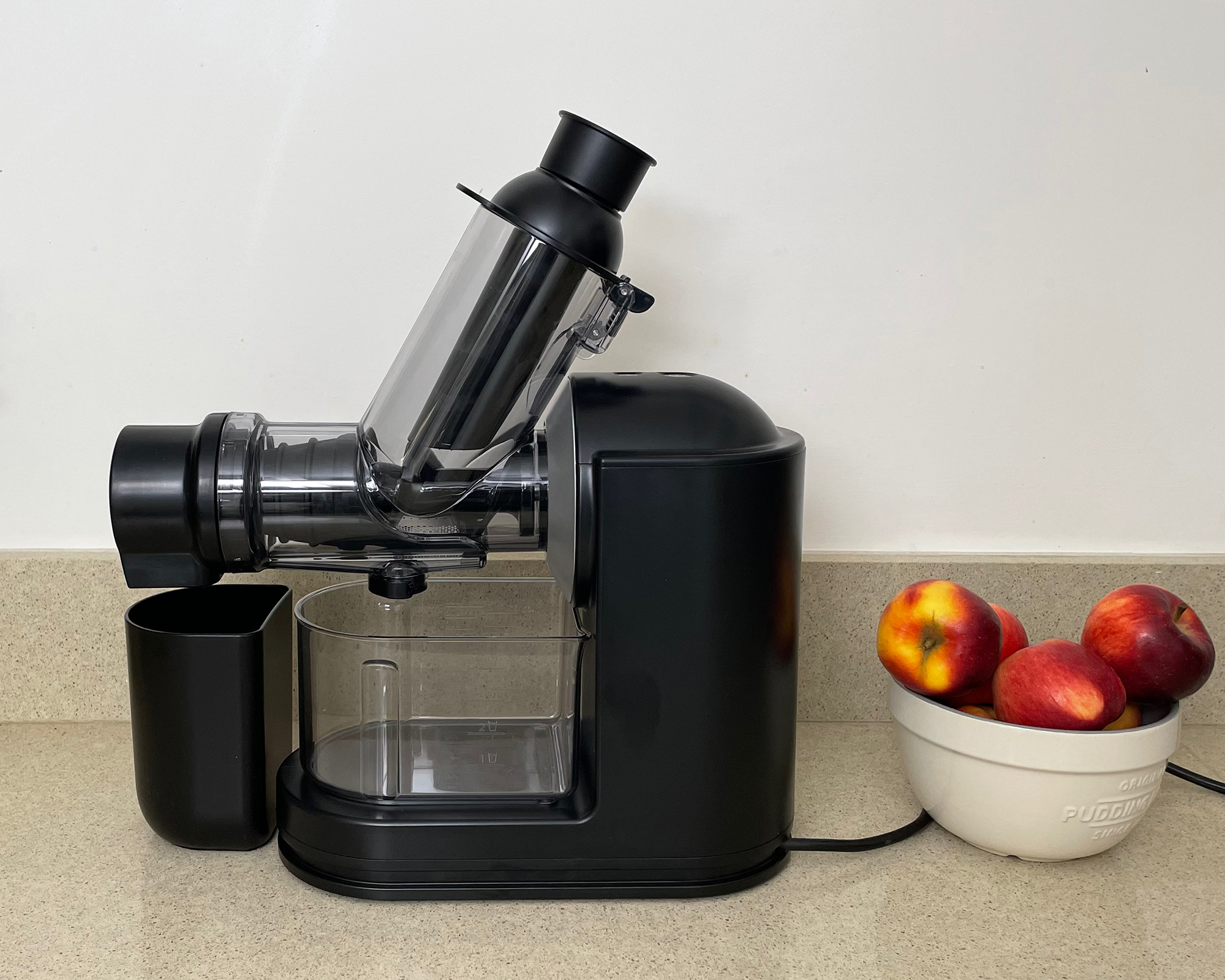
Philips Viva Masticating Juicer with a bowl of apples in cream-colored ceramic bowl

Helen McCue has been reviewing kitchen appliances for over 10 years and has reviewed many juicers during that time for a variety of different publications. Her favorite recipe is a mixed juice that contains some lower-sugar ingredients, such as leafy greens and ginger, for a punchy flavor.
The techy stuff
- Centrifugal or masticating: Masticating
- Material: Plastic
- Capacity: 1 L juice container, 0.75 L pulp container
- Feeding tube: 70 mm
- Power: 150 W
- Weight: 4.4 kg
- Dishwasher safe: Yes
- Other features: Recipes available on the Philips NutriU app
Unboxing the Philips Viva Masticating Slow Juicer
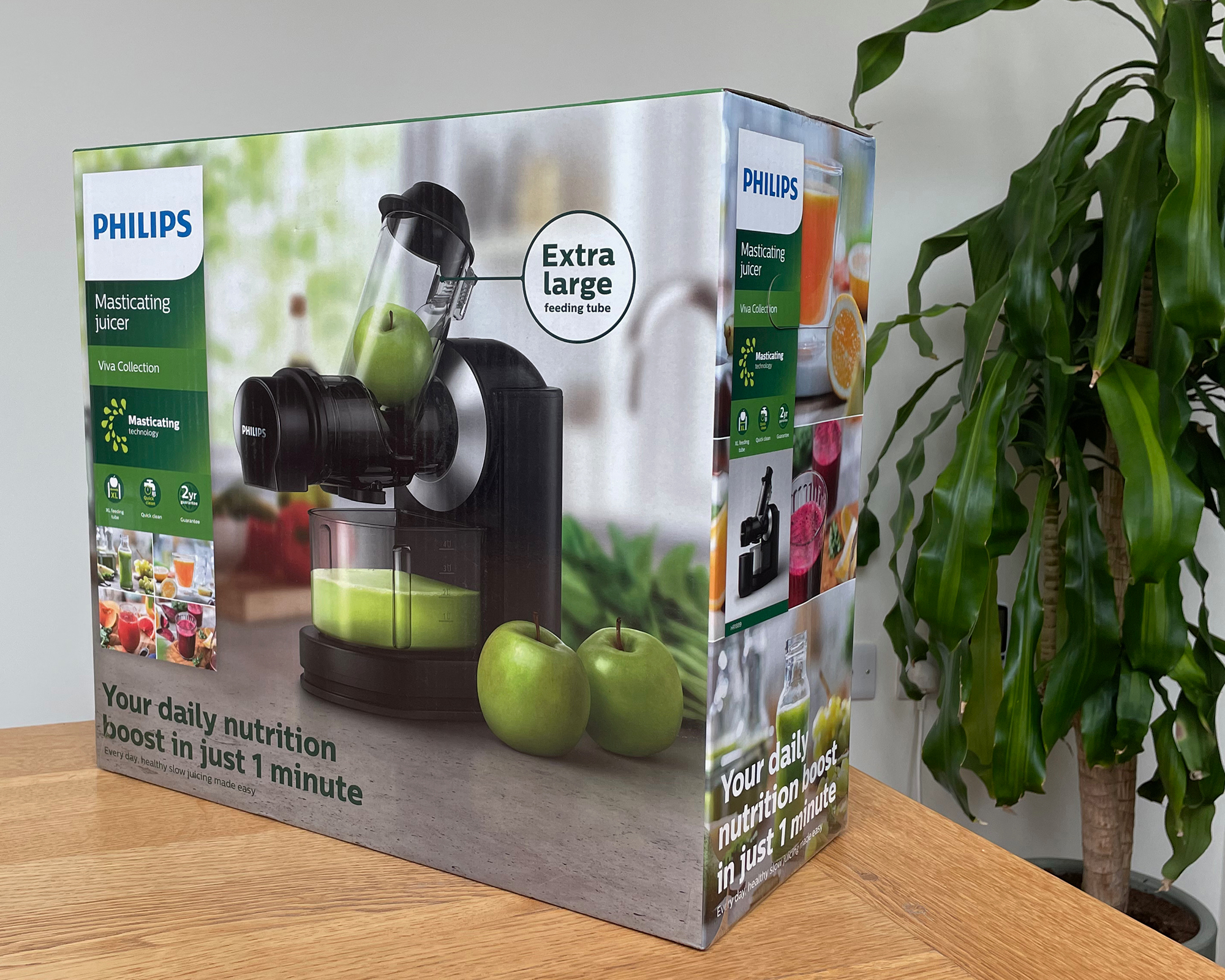
Philips Viva Masticating juicer in box on wooden table
According to the Philips website, the packaging is made from over 90% recycled materials, which gets the thumbs up from me. There’s very little plastic in the box, just a few bags that separate out the parts. It comes partially assembled, and all that needs to be done is clicking the juicing unit onto the base.
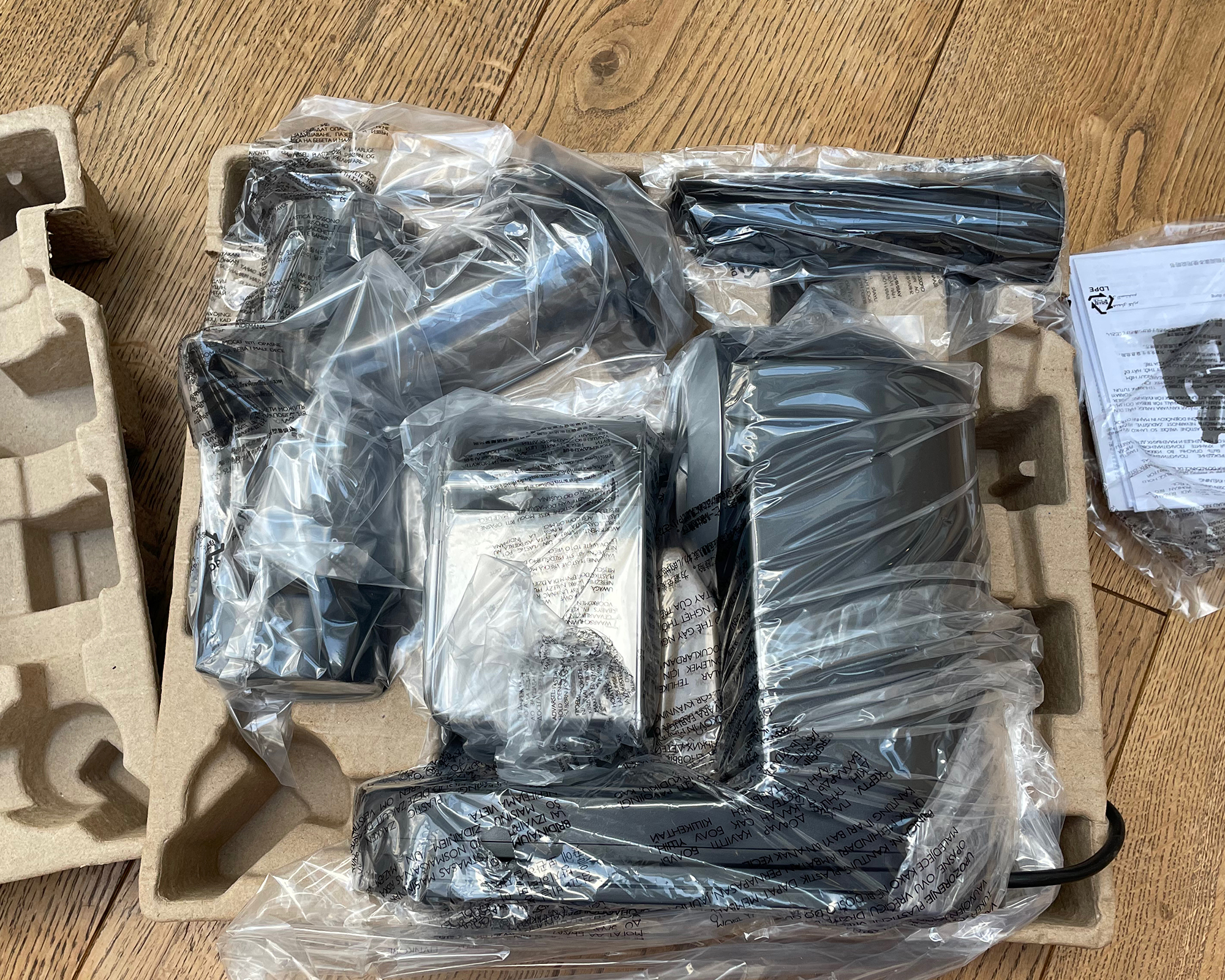
Unboxing the Philips Viva Masticating Juicer
From setup, the juice looked very straightforward to use. There are only two settings: a single speed and reverse. I was also pleased to see a wide feed chute because most cold-press masticating juicers I’ve reviewed have tiny chutes, which means you have to chop everything before juicing.
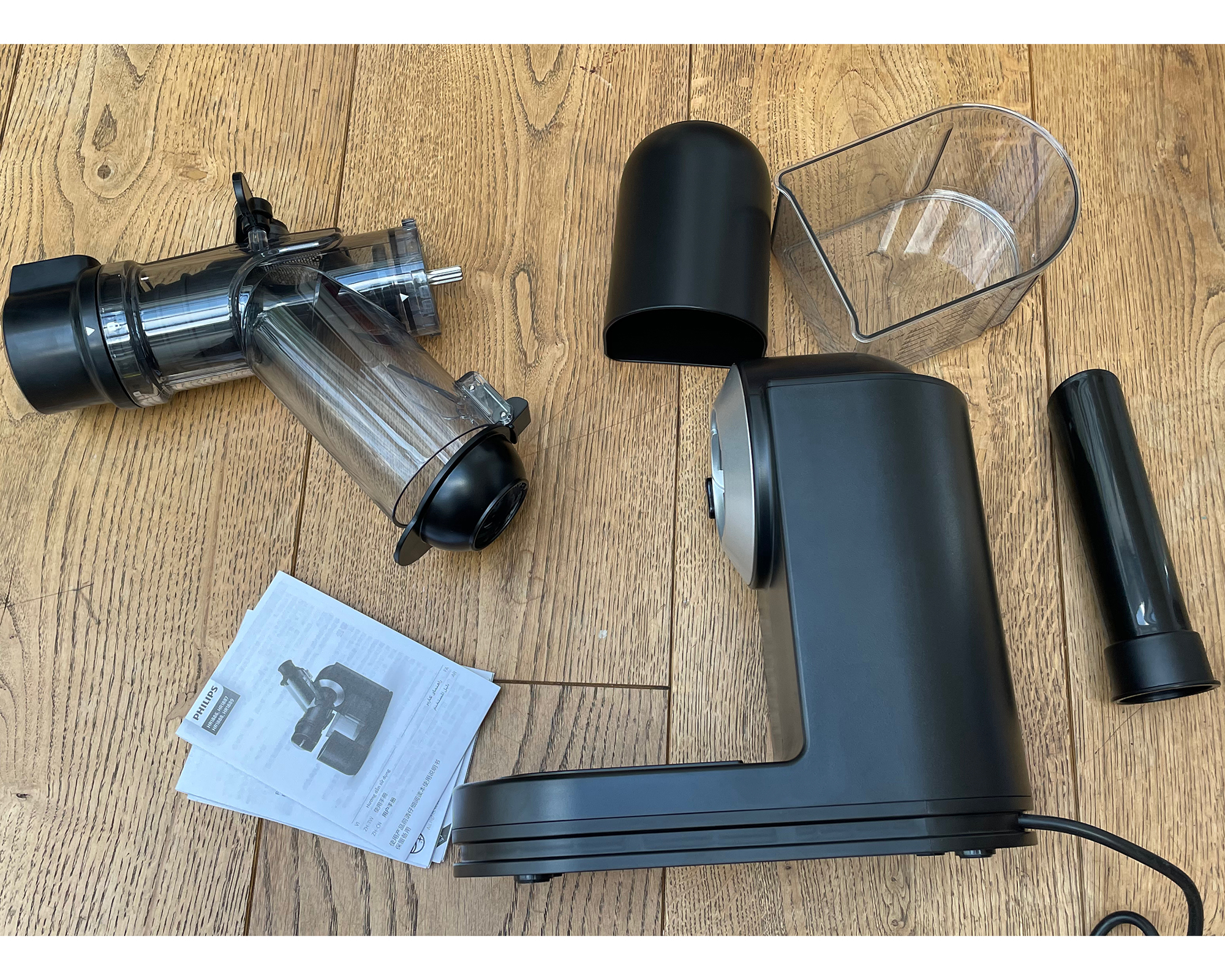
Asssmbling the Philips Viva Masticating Juicer
No extra parts come in the box, not even a cleaning brush. Though I wasn't too upset since it's less clutter for my cabinets. Speaking of storage, it’s quite neat and compact, and the waste container slots inside the juice container to keep it neat.
First impressions of the Philips Viva Masticating Juicer
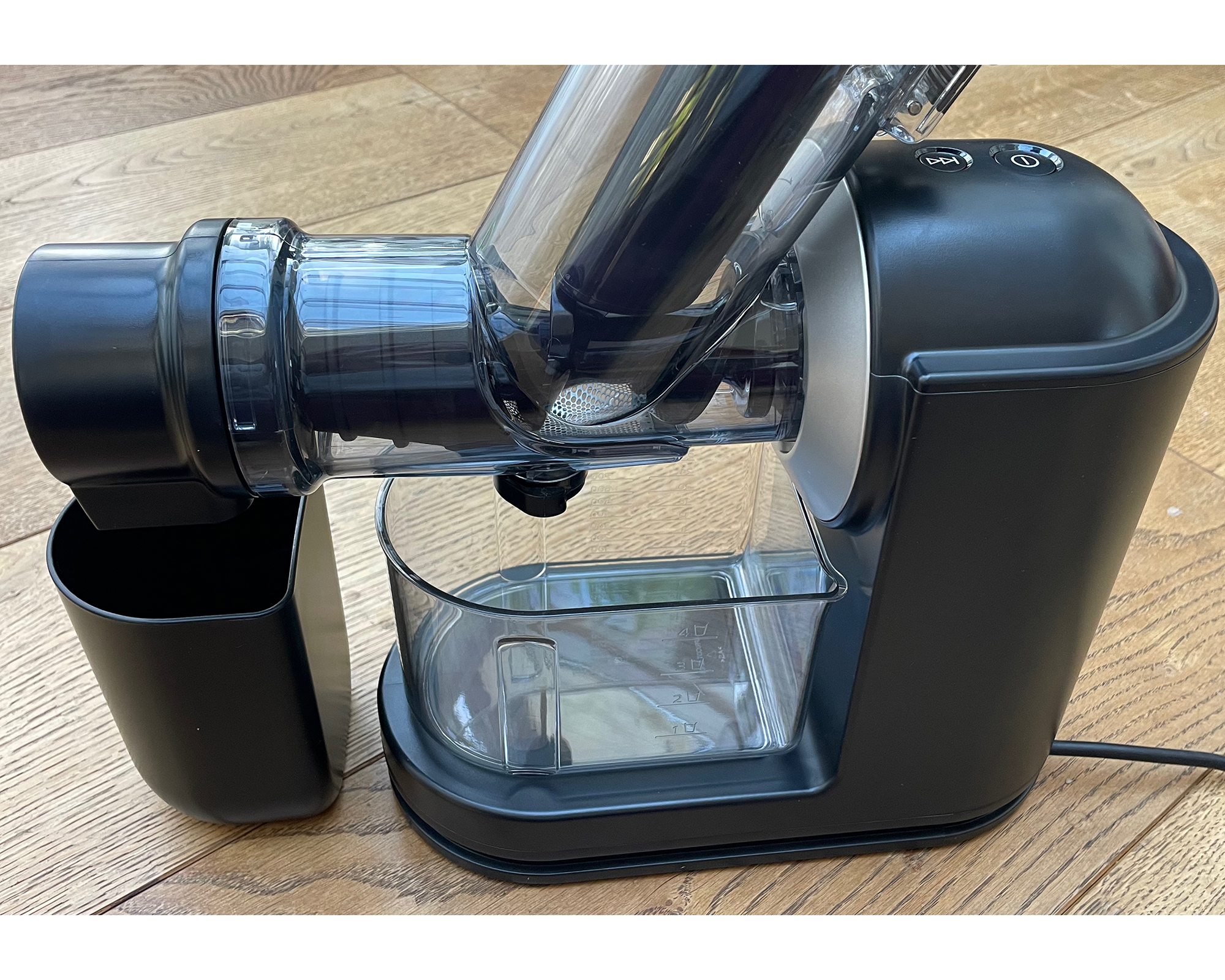
Philips Viva Masticating juicer fully assembled on wooden table
The instruction manual is one of those annoying bits of paper that folds out into a huge broadsheet-size thing. It covers all the basics, but needless to say it’s a bit lacking in hints and tips, so you’re pretty much left to your own devices. Having said that, there’s only one juicing speed so you can’t go too wrong. And should you feel the need for inspiration, there’s an accompanying Philips app with some recipes.
I don’t love that the juice is collected in a container as opposed to a jug. I must admit I prefer models that come with a lidded jug to collect the juice, so you can store what you don’t use in the fridge. It’s hardly a deal breaker though, and the container does have a pouring lip on each corner to make it easy to pour out the juice.
Overall it was sturdy and after a couple of goes at disassembling and reassembling, configuring it is already second nature. The parts all lock convincingly into place and I liked the look of it.
Making apple juice
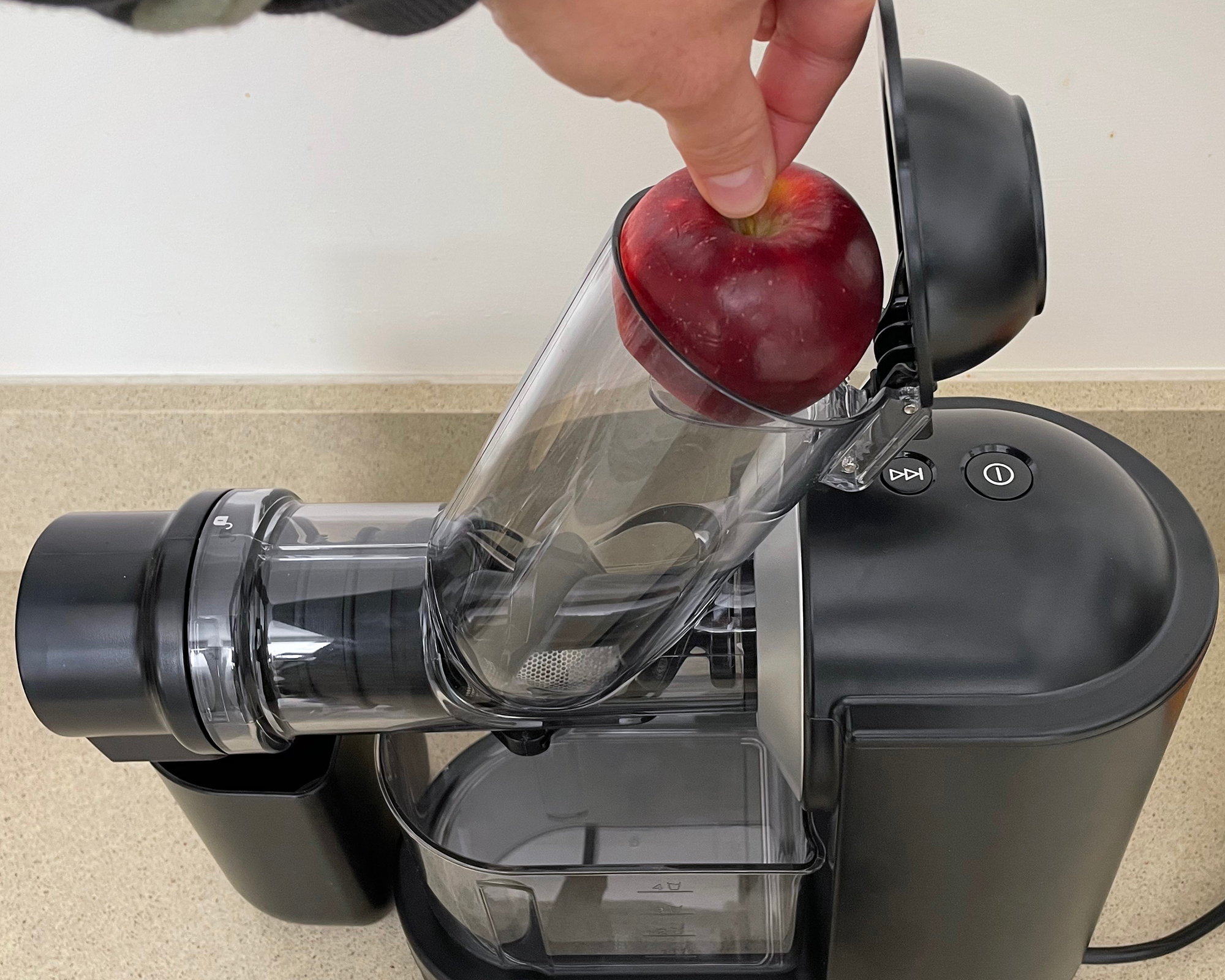
Helen McCue placing a whole red apple into the chute of the Philips Viva Masticating Juicer
While it’s great not having to chop apples into tiny pieces, I suspect it would have coped better with them if I had. I put the apples in one by one and pushed each one down with the pusher, but a couple of times large chunks of apple weren’t getting dragged into the juicing mechanism. I had to stop it and put it into reverse to move things around and coax it into completing the job. This is partly why it took around 2.5 minutes to work its way through just four whole apples.
The juice wasn’t 100% smooth, and I could taste small granules of apple. There was some froth on top, too. Don’t get me wrong, it still tasted great, deliciously sweet, and fresh. However, the amount of juice it extracted was not only low for a masticating juicer, it was low compared to most juicers. Of the apples I put in, only 59% was extracted as juice with the rest ending up as waste.
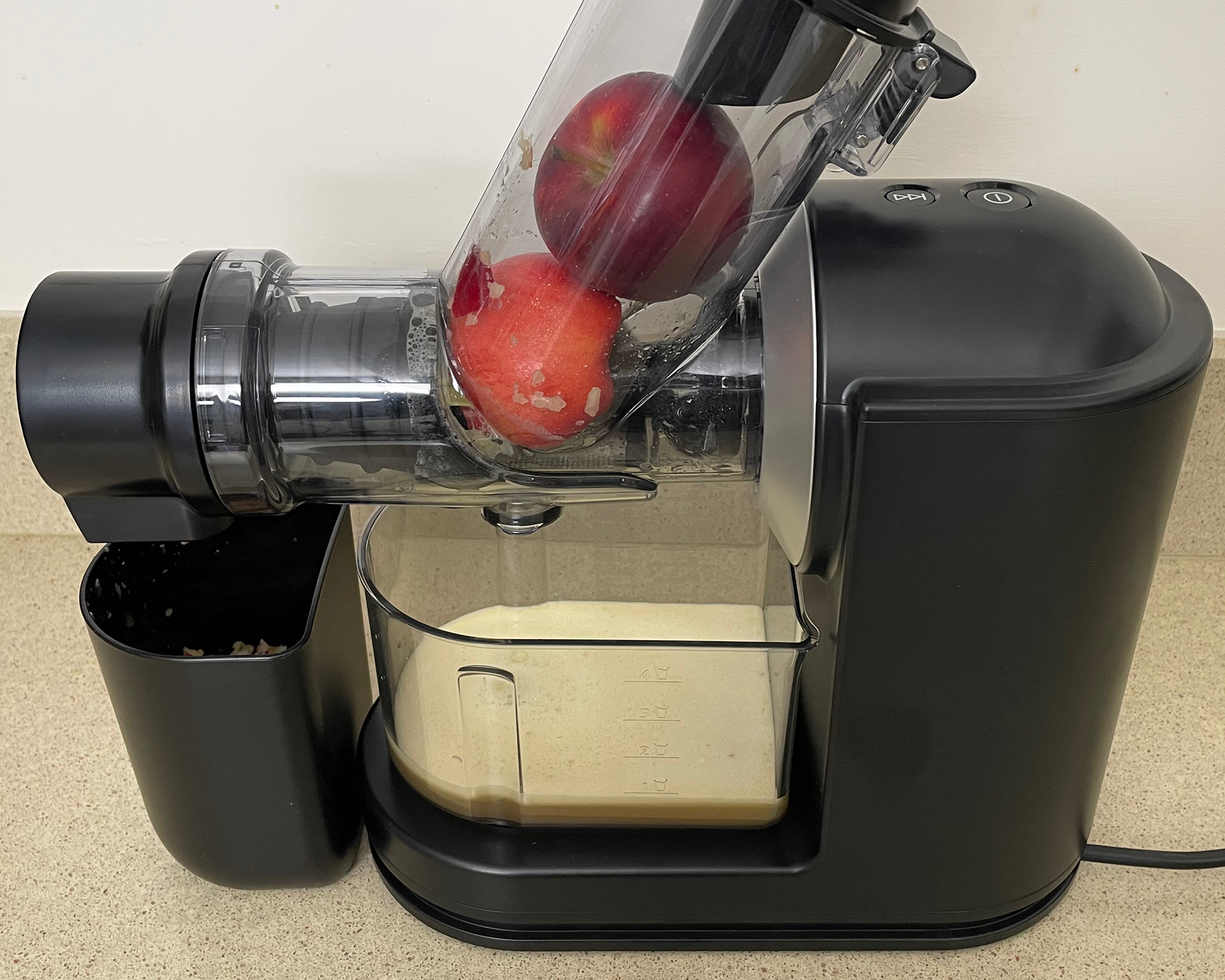
Philips Viva Masticating Juicer with two whole red apples in chute and freshly-pressed juice
The pulp container was half full after juicing just four apples, so if I was juicing my way through a big batch of fruit I’d probably put a big mixing bowl underneath the pulp spout instead.
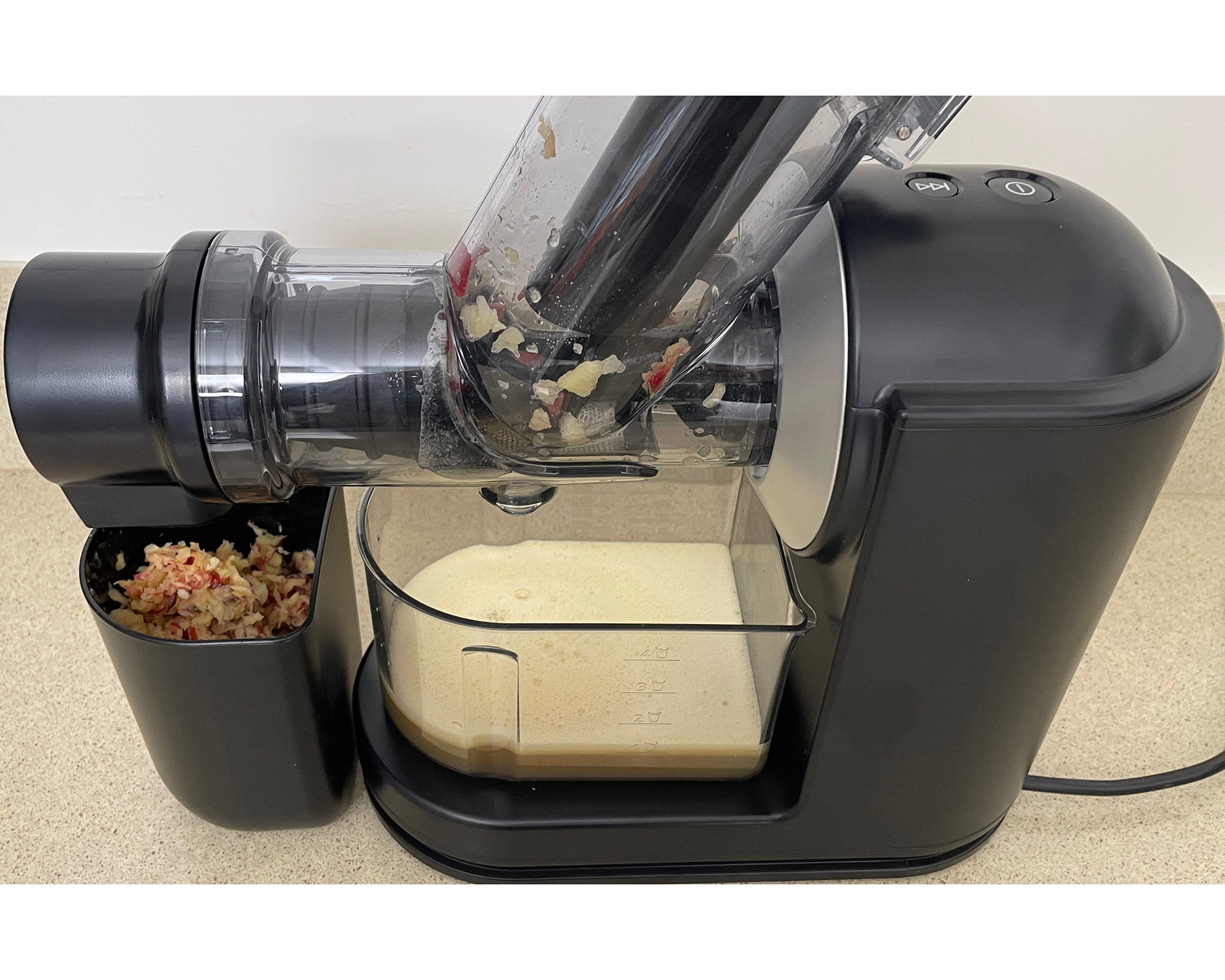
Philips Viva Masticating Juicer with apple juice yield and pulp container showing apple fiber
It maxed out my noise meter at 88 dB which is similar to a noisy blender, but the sound wasn’t coming from the motor, it was the squeaky chewing noises of the apple being ground up.
Making orange juice
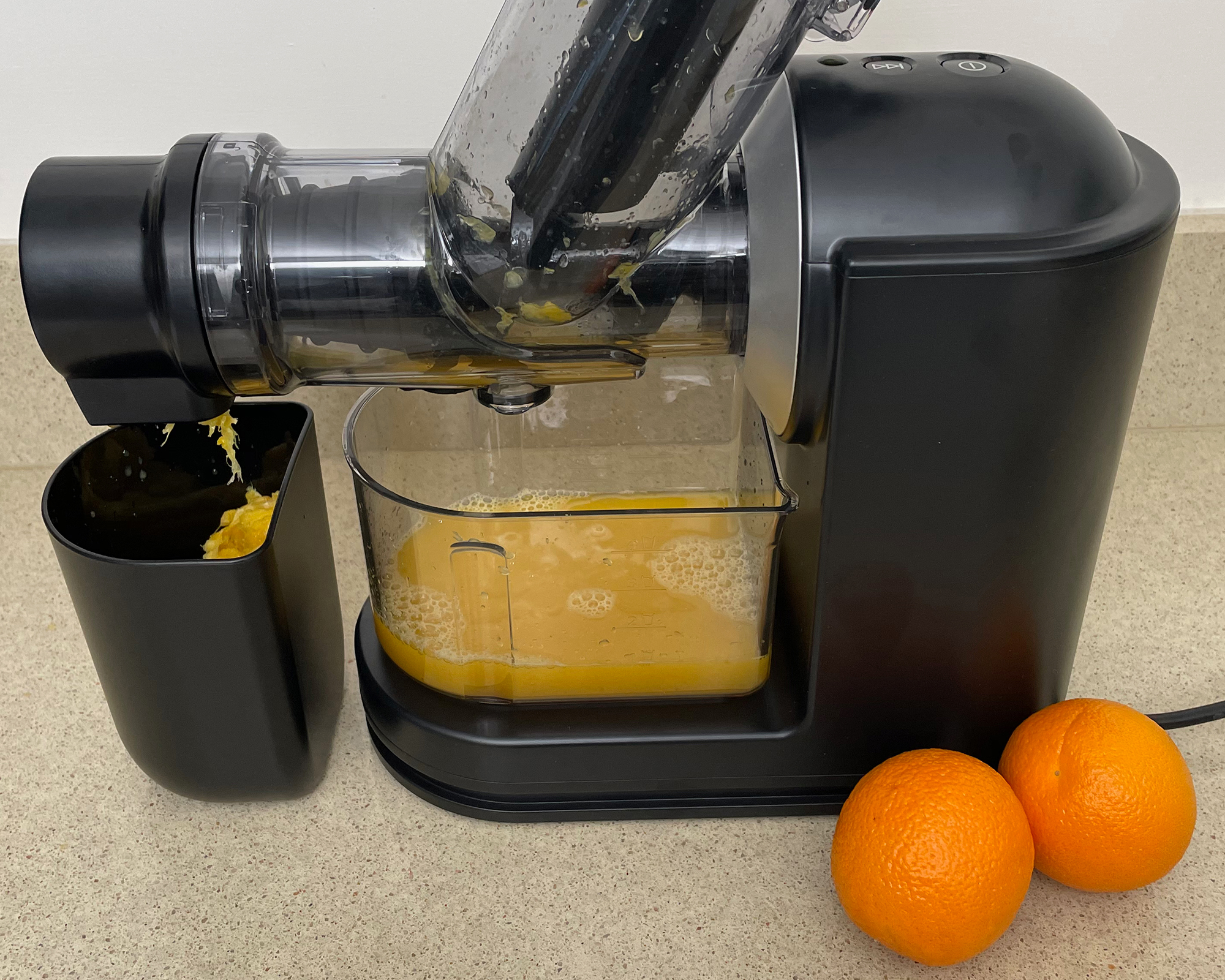
Making orange juice in the Philips Viva Masticating Juicer
I peeled the oranges but left them whole and popped them in one by one. It took around a minute to squeeze four oranges into a glass of juice. It was quieter than when juicing apples, hitting 72 dB on my noise meter, and was far less squeaky.
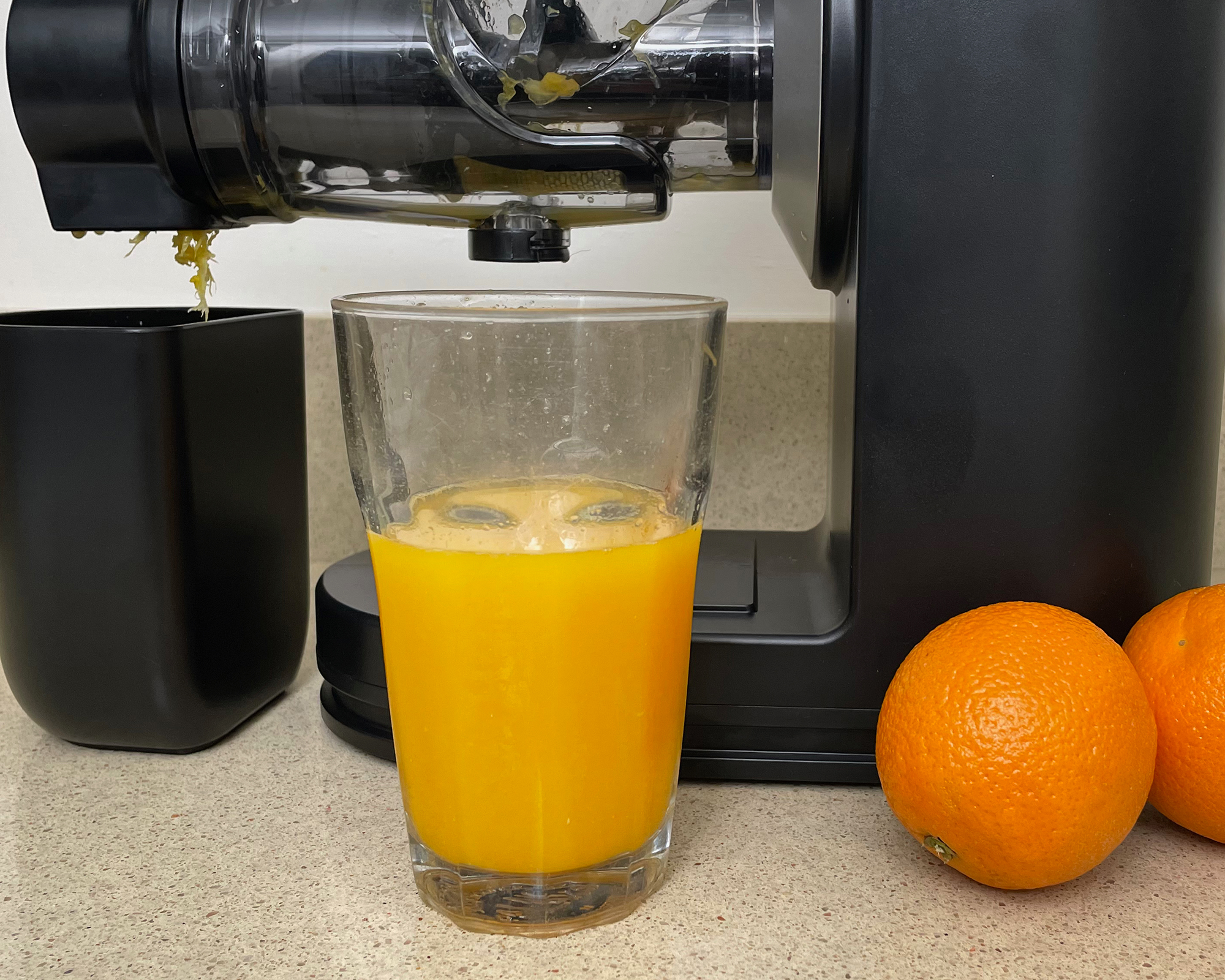
Fresh orange in a glass made using the Philips Viva Masticating Juicer
At 62%, the juice yield was average, but the juice itself was exceptional. Completely smooth, clear, and froth-free juice. Compared to other juicers I’ve recently reviewed, it's one of the best orange juices I’ve tasted.
Making a vegetable juice
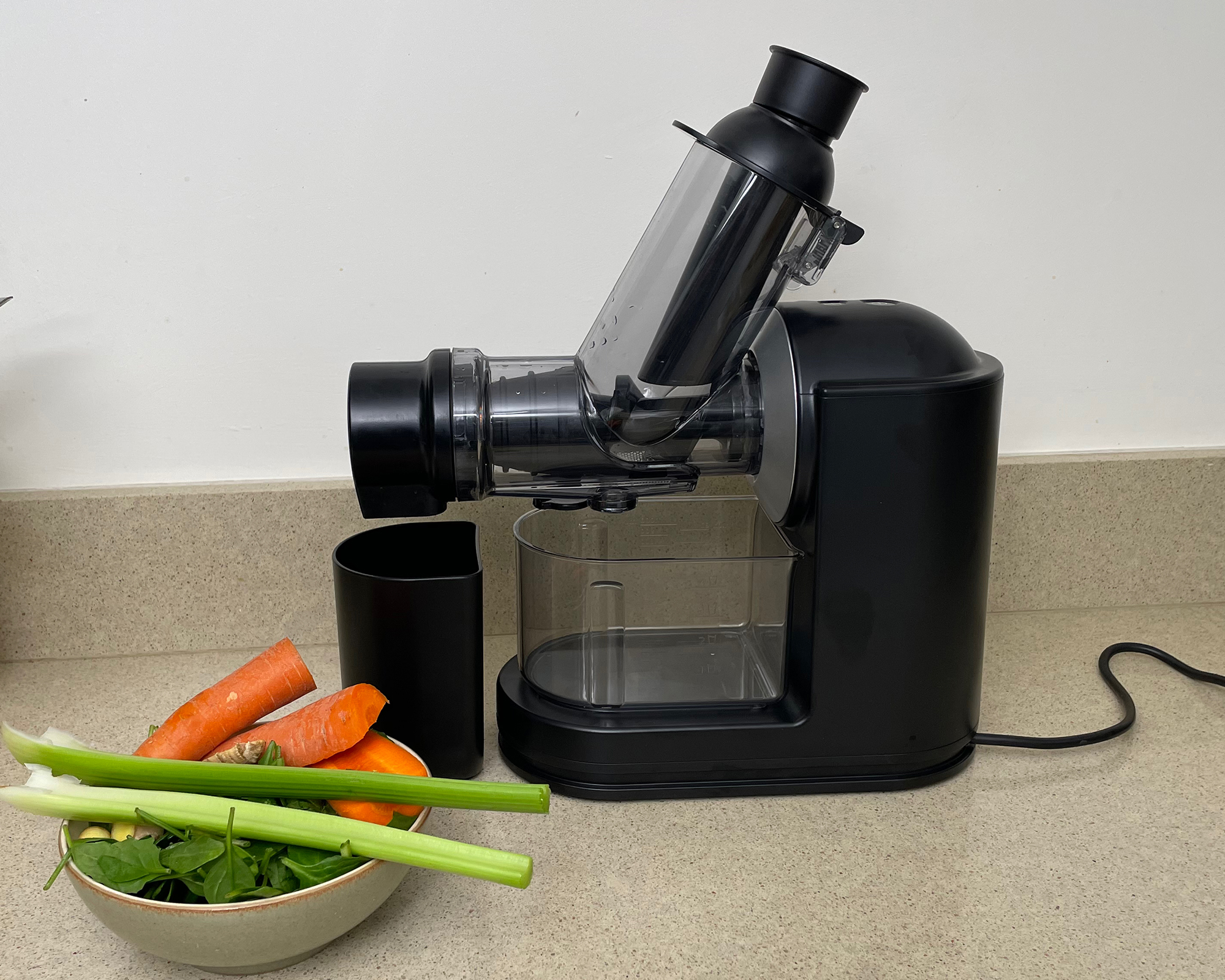
Philips Viva Masticating Juicer on counter with a bowl of vegetables including celery stalks, carrots and spinach leaves
For my healthy mixed vegetable juice, I opted for celery, carrot, ginger, and spinach. I left the ginger in chunks and kept the celery sticks whole, but I cut the carrot into four pieces. It took two minutes to juice everything, and frustratingly, some spinach stuck to the insides of the feeding tube and there was no way to dislodge it.

A glass of green vegetable-based juice made in Philips Viva Masticating Juicer
The juice was a rich green color, which told me it was effective at juicing the spinach leaves. But the 32% yield was disappointing and it created a lot of waste. The juice had a hot ginger flavor and the texture was somewhat grainy.
Juicing raspberries
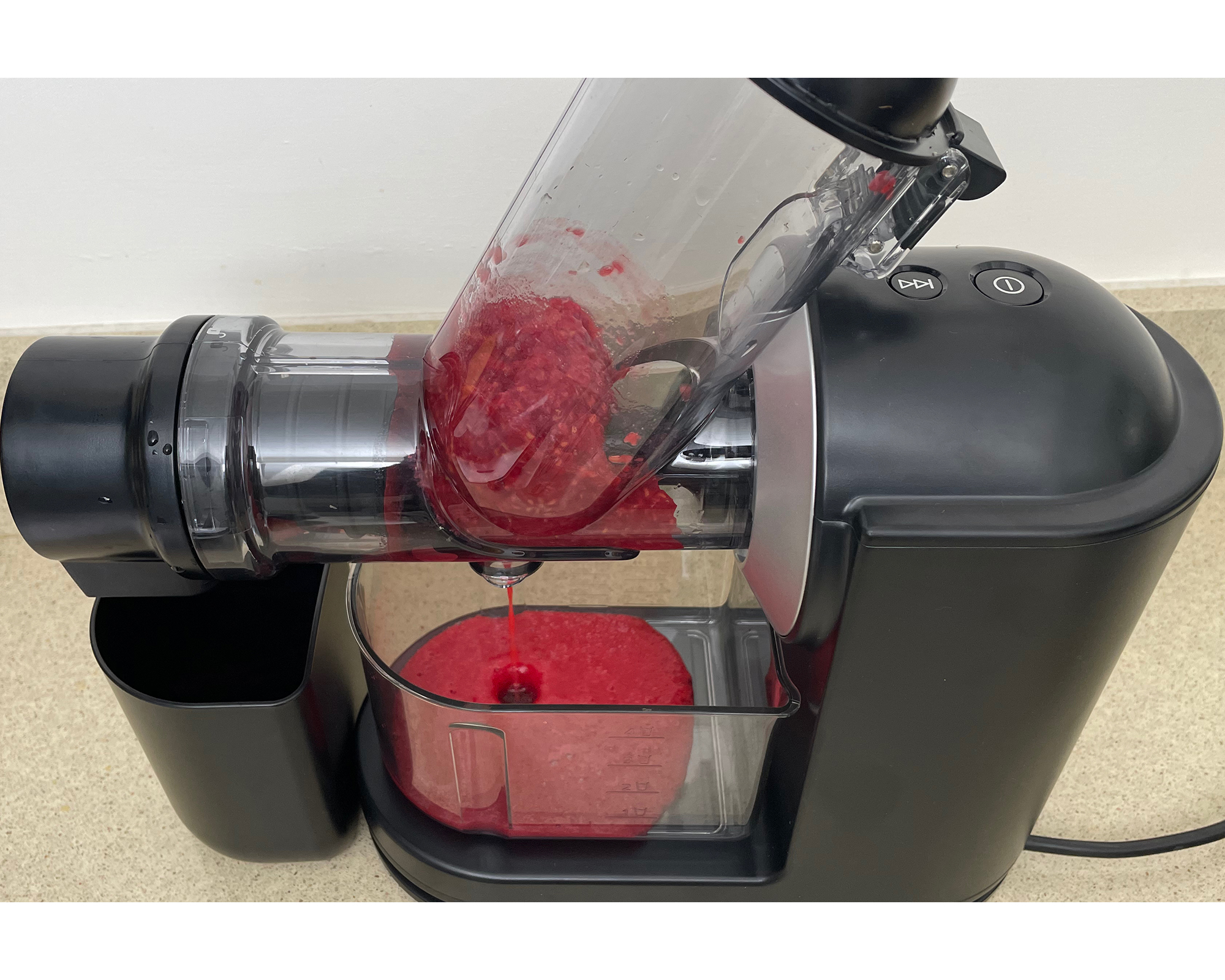
Juicing raspberries in the Philips Viva Masticating Juicer
The instructions advise against juicing very soft things like bananas and avocados, however, berries weren’t on the list so I gave it a go. I used a whole 300 g pack of fresh raspberries, and initially, it didn’t look like it was going to produce any juice. But slowly the juice started to come and the waste being ejected was very dry, in fact, it appeared to be little more than just seeds.
It took a long time, and I had to leave it running for eight minutes for it to work its way through all the raspberries. I stopped it when there was no more juice dripping out, even though there were still visible mashed-up raspberries in the pipe. The lengthy time was worth it though since it produced the best yield of all the juicers I’ve recently reviewed, by far. It turned 66% of the raspberries into a beautifully smooth and vibrant puree.
Cleaning the Philips Viva Masticating Slow Juicer
Every time I opened it up, there were some larger chunks of fruit trapped inside that hadn’t been juiced. This was frustrating to see, and it's worth noting that leaves easily get stuck to the insides of the pipe, too.
Thankfully, every single removable part can go in the dishwasher and unlike a lot of juicers, it doesn’t take over most of my dishwasher each time. But I learned pretty fast that I had to rinse away any debris from inside the juicer chute because it’s a funny shape and the dishwasher couldn’t remove the debris from inside it.
When cleaning by hand, most of it rinses clean quite easily, but there’s no brush supplied, so I used a scourer to wash the filter mesh. Because of the juicer's main shape and the hinged lid at the top of the feed tube that's not removable, it’s virtually impossible to get into the feed tube with a sponge or dish brush, so I had to rely on the water from the tap to rinse out any residues in this part. Likewise, when it came to drying, I couldn’t dry inside this part so it had to be air-dried.
How does it compare to other juicers?
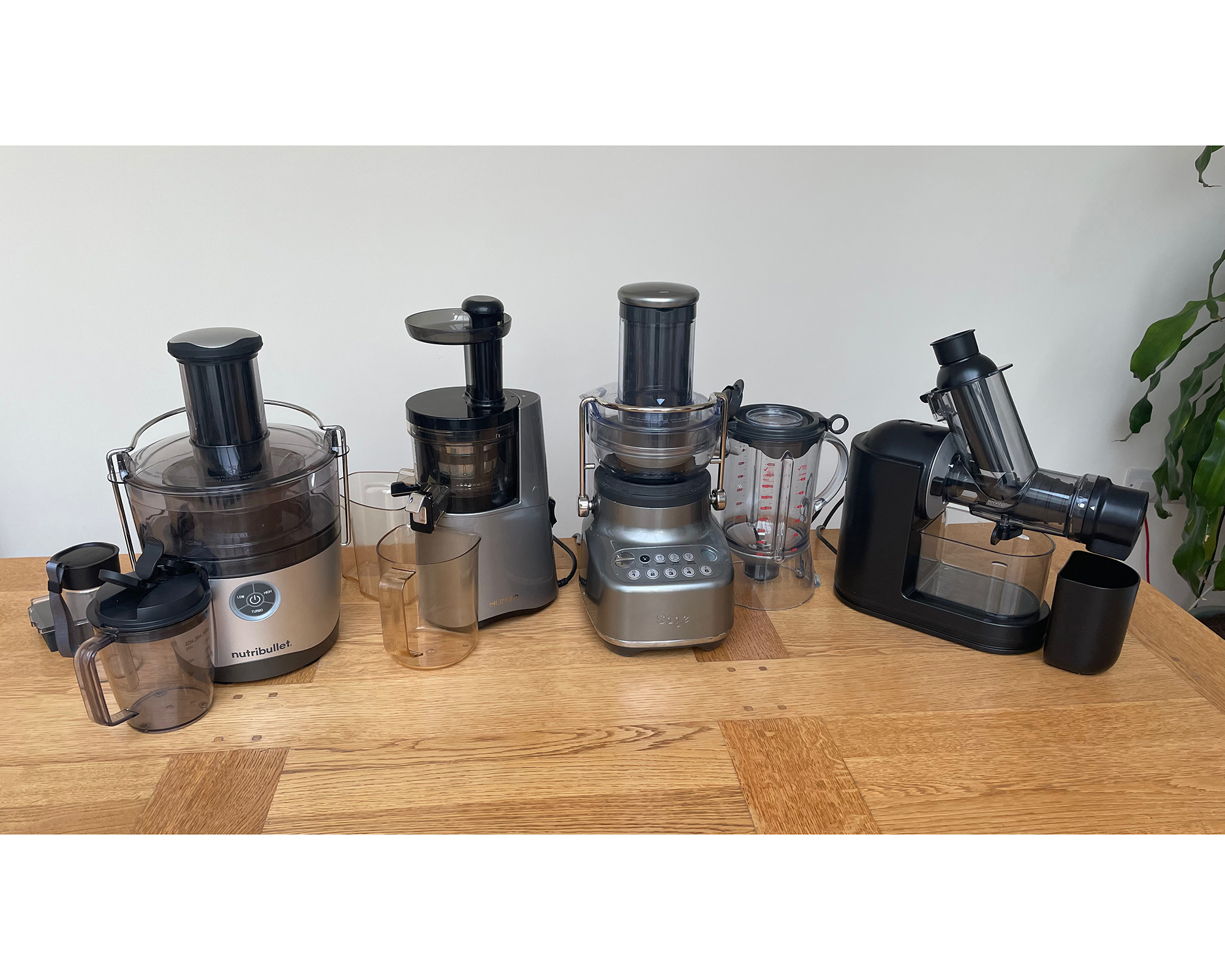
A selection of juicers on wooden dining table surface including the Philips Viva Masticating Juicer
For a similar price, the Nutribullet Juicer Pro is an excellent juicer that will give you much higher juice yields and less waste, so you can get more out of your fresh produce. The compromise is that it’s a centrifugal juicer so juices are more aerated and frothy; it’s also bulkier.
If you’re set on a slow masticating juicer, we highly recommend the Hurom H-AA. It’s a high-end model with excellent juice yields, but it’s got a high price tag to match, which will push it out of reach for some. Plus, all the parts have to be washed by hand, which can be time-consuming.
Should you buy the Philips Viva Masticating Slow Juicer?
It’s safe to say that — for the most part — I wasn’t wowed by this juicer. It did make a beautiful orange juice and managed to squeeze an impressive amount of juice from raspberries, but the juice yields were generally much lower than I’ve seen from other models, which means it creates a lot of waste.
In comparison to the best high-end slow masticating juicers, it is a great price and I love that it’s all dishwasher safe and easy to use. Still, all things considered, I think there are better juicers out there.
About this review and the reviewer
After completing a home economics degree, Helen went on to work for the Good Housekeeping Institute and has been reviewing home appliances ever since. She lives in a small village in Buckinghamshire in the UK and was allowed to keep the Philips Viva juicer after the review.
Helen reviewed this juicer alongside three others for Real Homes, so she could make informed comparisons on the speed of juicing, juice yields, and ease of use. She might have felt like she’d been on a juice cleanse by the end had she not been heavily supplementing all this juice with copious amounts of cheese and mashed potatoes.
Join our newsletter
Get small space home decor ideas, celeb inspiration, DIY tips and more, straight to your inbox!

Helen McCue is a freelance contributor who trained as a Home Economist. After starting her career in the food industry, she moved into home appliance reviews, utilising her cooking skills and experience to put all kinds of products to the test, and over the years has reviewed hundreds of home and kitchen appliances for a variety of publications.
-
 Jennifer Garner's dining room is filled with “cohesive and intentional” features that showcase her personality
Jennifer Garner's dining room is filled with “cohesive and intentional” features that showcase her personalityDesigners love how the actor's space is rustic yet refined
By Eve Smallman Published
-
 Bobby Berk has revealed his favorite wall paint color — designers agree that it's a chic choice
Bobby Berk has revealed his favorite wall paint color — designers agree that it's a chic choiceThe Queer Eye star's choice of black is elegant and easy to decorate with
By Eve Smallman Published
-
 Vanessa Hudgens’ wallpaper puts a trendy twist on a classic style — designers love her effortless approach
Vanessa Hudgens’ wallpaper puts a trendy twist on a classic style — designers love her effortless approachThe actor's nature-inspired print is characterful and chic
By Eve Smallman Published
